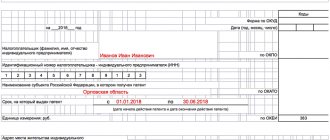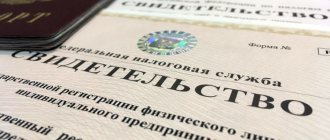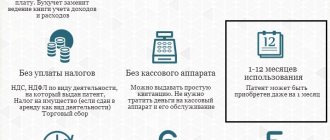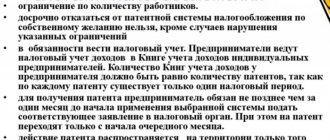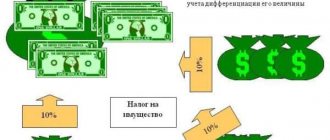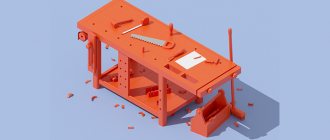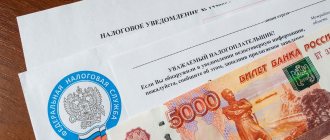All individual entrepreneurs are required to keep a Book of Income and Expenses, abbreviated as KUDiR, with a few exceptions. We will talk about the specifics of the document for different tax regimes in the article.
First, about the exception. The exception is for individual entrepreneurs who use UTII. They may not fill out the Book, provided that they work only for UTII. However, when combining UTII with other tax regimes, the individual entrepreneur is obliged to ensure separate accounting of property and transactions, that is, fill out the KUDiR for each tax regime.
The Ministry of Finance of the Russian Federation together with the tax service have developed 4 KUDiR forms:
- for individual entrepreneurs on OSNO;
- for individual entrepreneurs on the simplified tax system;
- for individual entrepreneurs on PSN;
- for individual entrepreneurs on the Unified Agricultural Tax.
The book of income and expenses for individual entrepreneurs is a tax register that forms the basis for calculating taxes in connection with the use of special regimes.
KUDiR for individual entrepreneurs on OSNO
The procedure for filling out the Book for individual entrepreneurs under the general taxation regime was approved by joint Order of the Ministry of Finance No. 86n and the Ministry of Taxes of Russia No. BG-3-04/430 dated 08/13/02.
We have prepared a sample document for the OSNO “Book of Expenses and Income of Individual Entrepreneurs”; you can download it for free at the end of the article.
The book of income and expenses for individual entrepreneurs on OSNO consists of a sheet with information about the individual entrepreneur, a sheet with contents and 6 sections:
- Accounting for income and expenses.
- Calculation of depreciation of fixed assets.
- Calculation of depreciation for small business enterprises not written off as of 01/01/2002.
- Calculation of depreciation of intangible assets.
- Calculation of accrued and paid wages.
- Determination of the tax base.
Several tables have been developed for each of them; they must be filled out for each type of activity separately.
The sheet “Information about the individual entrepreneur” indicates the registration data of the individual entrepreneur, his bank accounts, license numbers, cash register numbers, types of business activities, place of business, telephone numbers.
The “Contents” sheet lists all completed tables with page numbers.
6.1 reflects the summary data on the basis of which the declaration is filled out.
Book of accounting of income and expenses, sample of filling out section 6.1
KUDiR for individual entrepreneurs on the simplified tax system
The document for the simplified tax system is much simpler, and it is filled out not only by individual entrepreneurs, but also by organizations that use the simplified taxation system.
The book of income and expenses for the simplified tax system 2020 consists of a title page and 4 sections:
- Income and expenses.
- Accounting for the costs of acquiring fixed assets and intangible assets taken into account when determining the tax base.
- Calculation of the amount of loss that reduces the tax base under the simplified tax system.
- Expenses that reduce the amount of the calculated simplified tax system.
The title page indicates: name of the individual entrepreneur, INN, object of taxation, bank account details, tax period, OKPO code.
In section 1, the amounts of income are recorded in chronological order as payments are received from clients.
Sample of filling out KUDiR 2020 “income minus expenses” (hereinafter referred to as “D minus R”):
This is what section 1 of KUDiR 2020 of the simplified tax system looks like, you can find excel at the end of the article.
The last, 5th, column is filled out only for the simplified tax system with the taxable object “D minus R”.
The figures reflected in the first section of KUDiR are summed up quarterly on an accrual basis, and based on the data obtained, the taxable base for the simplified tax system is determined.
Sections 2 and 3 are filled out only with the simplified tax system “D minus R”.
Section 4 is filled out only for the object of taxation “Income”, it shows paid insurance premiums and other things determined by clause 3.1 of Article 346.21 of the Tax Code of the Russian Federation.
The amounts specified in section 4 reduce the amount of the accrued simplified tax system in full for individual entrepreneurs without employees and by no more than 50% if the individual entrepreneur makes payments of remuneration to individuals.
A book of income and expenses for individual entrepreneurs: is it necessary to keep it, regulatory requirements, what is it used for?
The basic regulatory act regulating the tax accounting of individual entrepreneurs registered in the state business register as individual entrepreneurs and applying the main tax regime (OSNO) is the Procedure for accounting for income and expenses of individual entrepreneurs, approved by Order of the Ministry of Finance of the Russian Federation No. 86n dated August 13, 2002 (as amended by June 19, 2017).
The main requirement of the law is here: every businessman registered with the Unified State Register of Individual Entrepreneurs, from the moment he begins his activities, must reflect all business transactions when conducting business in the Book of Accounting for Income and Expenses (KUDiR). The main goal of this action is full control of the taxable base (TB) by the fiscal regulator and, of course, by the entrepreneur himself.
At the same time, 3 main goals are recognized as the purpose of the Accounting Book:
- generalization;
- systematization;
- accumulation of data contained in primary documents accepted for tax accounting.
But these are the key tasks of maintaining KUDiR, which can be applied to any of the modes, but the specific purpose of the Accounting Book for individual entrepreneurs on OSNO is to check the calculations of the tax base of a business for personal income tax.
The final data of individual entrepreneurs on OSNO, entered into KUDiR, are transferred to the tax return for 3_NDFL
I would like to note that, receiving feedback from entrepreneurs in the regions today, we can draw only one indisputable and disappointing conclusion: from the end of April 2020, total and unprecedented inspections of small businesses began. Desk audits based on the results of 2020 are being carried out with particular zeal. My friend at this moment is giving comments to the inspectors on thirty-eight points that arose during the audit of her tax return. Note: it is simplified with a base of 6%, that is, everything should be quite simple there. Without exaggeration, I will say: every contract, invoice, every fiscal receipt is checked and analyzed by tax authorities. And all individual entrepreneur reporting consultants speak with one voice: the situation with inspections and fiscal control will worsen every year. State controllers need to collect taxes for the budget. By fulfilling their KPIs, tax authorities will increasingly “tighten the screws” when checking reporting, including individual entrepreneurs’ tax accounting books.
Income book for individual entrepreneurs on PSN
Entries are made in the Patent Income Book (PSN) on the day payment is received and only for income from activities on the patent.
For each patent, a separate Book is opened for the validity period of the patent during the calendar year.
Expenses for activities on the PSN are not recorded in the document.
As usual, we give you the opportunity to use a sample: KUDiR for 2020 - free for PSN below.
How to fill out KUDIR
Filling out KUDIR yourself is quite simple, especially for individual entrepreneurs with a small number of operations. You can also use the services of an accountant or special online services. Today we will talk about how to fill out KUDIR yourself.
So, if this article is read by those who have never seen the KUDIR form, you can print it out. You will see 4 sections in the form.
Let's deal with them one by one:
- Title page – a standard title page in which you must indicate the taxpayer’s data and the year for which the document is being drawn up;
- Section I Income and expenses - it is filled out by all individual entrepreneurs and legal entities using the simplified tax system;
- Section II Calculation of expenses for fixed assets and intangible assets, which are taken into account when calculating the tax base;
- Section III Calculation of the amount of loss taken into account when calculating the simplified tax system
These two sections are filled out only by those who have switched to the simplified tax system with the Income - Expenses base.
- Section IV Expenses that reduce tax on the simplified tax system in accordance with the Tax Code of the Russian Federation (in other words, insurance premiums that you pay for yourself and your employees) - in this section, data is entered only by those who have chosen the simplified version with the Income base.
What's the result? An individual entrepreneur using the simplified tax system for income must fill out the title book, sections I and IV.
Step 1: Fill out the title page
What should be indicated on the title page? We enter the following data:
- the year for which the book is kept – “for 2020”;
- book opening date – 2019/01/01;
- Full name of individual entrepreneur (name of organization);
- INN IP (TIN/KPP of a legal entity);
- The object of taxation is “income”;
- Address (for individual entrepreneurs – place of residence, for legal entities – location);
- Account number and bank.
An example of filling out the KUDIR title page is presented below:
Step 2: Fill out Section I Income and Expenses
Individual entrepreneurs using the simplified tax system-Income records their income in this section. Some expenses are also indicated, but I’ll say more about that below.
So, there are four tables in the section - one for the quarter. Each operation is written on a separate line; you add the number of lines yourself when you print the form. In table 5 column:
- No. – enter the entry number in order;
- Date and number of the primary document – enter information on the document that is the basis for recording the transaction;
- Contents of the operation – write down the essence of the operation;
- Income – indicate the amount of income;
- Expenses - the amount of expenses is indicated here (the column is filled in by those who calculate the simplified tax system using the Income - Expenses base).
Here are a few examples, since income can come in different ways:
- Upon receipt at the cash desk (for those who use cash registers) - indicate the date and number of the Z-report, which is done at the end of the day;
- When receiving revenue from a BSO: If this is a BSO on demand, then enter the date and its number;
- If these are several BSOs per day, then compile one PKO for them and indicate its date and number. In this case, the PKO must indicate all the BSOs that you wrote out during the day.
Important! This way you can register BSOs issued in one day - they will all have the same date. BSO for different days cannot be reflected all together in one line.
- When you receive it on your account, indicate the date of arrival and the payment slip number / bank statement number.
An example of filling out KUDIR in each case is given below:
There are situations when you need to issue a return, but the receipt has already been recorded in KUDIR. This can be done by reversing entry. The refund amount is also reflected in the “Income” column, but with a minus sign.
See the example above for the recording format. Clause 4 reflects the refund to the supplier of the overpaid advance amount.
At the end of the quarter, the table displays the total amount of income. In our example, it was 47,600 rubles. The remaining tables are filled out during the 2nd, 3rd and 4th quarters. They summarize quarterly income and cumulative results for half a year, 9 months and a year. Let’s imagine that we didn’t have any operations in the following periods, then the remaining tables will be like this:
In some cases, payers of the simplified tax system show expenses in KUDIR. There are actually two such cases:
- Expenses from payments to assist unemployed citizens;
- Expenses from subsidies received under the SME support program.
These amounts are reflected in two columns at once - as income and as expenses. As a result, they cancel each other out and do not have any impact on the calculation of the tax base.
An example of such a record is here:
| Registration | Sum | ||||
| No. | Date and number of the primary document | Contents of operation | Income taken into account when calculating the tax base | Expenses taken into account when calculating the tax base | |
| 1 | 2 | 3 | 4 | 5 | |
| 1. | 02.02.2019 p/p No. 2 | Payment of rent under agreement No. AP-14-02 dated January 15, 2019 at the expense of the subsidy received | 20 000 | 20 000 | |
The certificate for Section I is not filled out, information is filled in by those who have chosen the simplified tax system with a different base.
General requirements of KUDiR for all tax regimes
Every year a new document is opened.
At the end of the year, it is printed, stapled, the pages are numbered, the total number of pages is certified by the signature of the individual entrepreneur.
All information is recorded in chronological order based on primary documents and only after payment (cash method).
For transactions with settlements through a cash register, it is allowed to fill out the Book at the end of the working day using the Z-report.
KUDiR and primary documents on the basis of which records are made must be stored for 4 years.
If there is no activity, a “zero” KUDiR is printed and stitched.
For individual entrepreneurs on OSNO
For individual entrepreneurs on the simplified tax system
For individual entrepreneurs on PSN
Electronic documents
KUDiR is a book of income and expenses that must be kept by: individual entrepreneurs on the simplified tax system, OSN, PSN, unified agricultural tax (i.e., everything except UTII), as well as organizations on the simplified tax system.
KUDiR can be carried out independently, i.e.
manually on paper. However, with a large number of income transactions, in order to save time and avoid errors when filling out the KUDiR, it is better to use our service “ Filling out the book of income and expenses online .” The service will help you create a book both automatically with downloading statements from your bank(s), and manually, and the service also allows you to use both filling options. When using automatic or semi-automatic generation, you need to receive a bank statement in 1C format, WIN encoding. The service allows you to download several statements from several banks, the main thing is that they are for the reporting period for which you are generating KUDiR. After filling out all the forms, you will receive a finished book in Excel format. All you have to do is check it, print it, number it, lace it up and certify it with your signature and seal. BE SURE TO CHECK THE BOOK YOU RECEIVE!!! Check payments with the word REFUND and its derivatives. If you have chosen a mixed filling mode, be sure to carefully review the received file to ensure that the same payments are added. Please note that the “income” column should not include funds:
- — from the Social Insurance Fund for payment of benefits;
- — on loans and borrowings;
- — as payment for the authorized capital;
- — pledge and deposit (with the exception of subsequent offset);
- — under an agency or commission agreement (you should only indicate your income);
- — return of the security deposit from participation in trades and auctions;
- — amounts from the return of low-quality goods or advance payment;
- — under an assignment agreement (you should only indicate your income);
- — dividends, if part of the share belongs to the company;
- — interest on deposits (only for individual entrepreneurs.
SUBMISSION AND CERTIFICATION OF KUDIR
You do not need to submit KUDiR to the tax office yourself, only upon request. However, a stitched and numbered KUDiR must be available for previous reporting periods, even in the absence of activity, profit or expenses, in this case a “zero” KUDiR is made. The fine for its absence for individual entrepreneurs is 200 rubles , for organizations - 10,000 rubles. On February 20, 2020, in the first reading, the State Duma adopted a bill abolishing KUDiR for simplifiers at the “Revenue” facility from July 1, 2020. This relaxation applies only to persons who make payments to buyers of goods (works, services) using cash register equipment.
Section VI. Determination of the tax base
Table 6-1 is filled out based on the results of the calendar year and is used to calculate personal income tax and fill out form 3-NDFL.
It takes into account sales income from tables 1-7 and other income (including those received free of charge). Expenses include the results of tables 1-7 (material costs), tables 2-1, 2-2, 3-1, 4-1, 4-2 (depreciation charges), tables 5-1 (labor costs), tables 6-2 (other expenses).
Other expenses (Table 6-2) include expenses related to business activities not included in other sections:
- Amounts of paid taxes and fees established by law (except for personal income tax).
- Expenses for property protection and fire safety.
- Rent (leasing) payments if such property is available.
- Travel expenses are within normal limits.
- Payment for information, consulting, legal services.
- Office, postal, telephone expenses, payment for communication services (including Internet and e-mail).
- Expenses for the purchase of computer programs and databases.
- Expenses for repairs of fixed assets.
- Advertising expenses and other expenses related to business activities.
Table 6-3 indicates the expenses of the current tax period, the income for which will be received in the following tax periods. These may be seasonal expenses.
In this way, the book of income and expenses of the individual entrepreneur for OSNO is filled out. If you still have questions on the topic, ask them in the comments: we will answer them promptly.
What sections does KUDiR consist of?
KUDiR consists of a title page and five sections:
- Section I - for accounting of income and expenses.
- Section II - for calculating expenses for fixed assets and intangible assets.
- Section III is for calculating losses for past periods that reduce the tax base.
- Section IV - for accounting for expenses that reduce tax.
- Section V - for calculating the amount of the trade fee that reduces the tax.
Which sections you have to fill out depend on the object of taxation: “Income” or “Income minus expenses”. Let's take a closer look at the differences.
